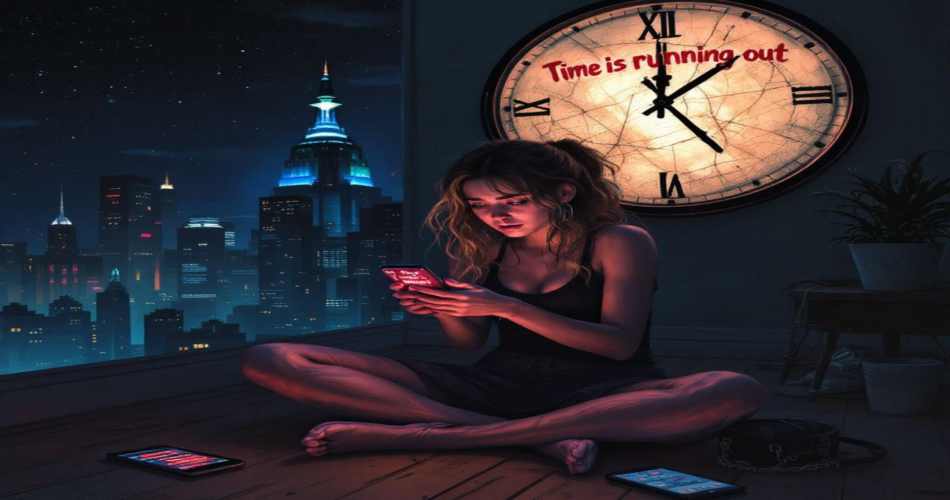Imagine waking up at 2 a.m., grabbing your phone “just to check the news,” and finding yourself scrolling endlessly through alarming headlines and dire updates. The minutes turn into an hour, and by the time you finally set your phone down, you’re overwhelmed, anxious, and wide awake. This compulsive habit, known as doomscrolling, has become a common phenomenon in today’s digital age. But what exactly is doomscrolling? Why do people indulge in it, and what are the harmful doomscrolling effects on mental health? Most importantly, how can you break free from this cycle? Let’s explore.
Table of Contents
- What Is Doomscrolling? Understanding the Behavior
- Doomscrolling Effects on Mental and Emotional Health
- Why Do People Doomscroll? The Psychological Drivers
- How to Stop Doomscrolling: Simple Solutions
- The Broader Impact of Digital Habits on Society
What Is Doomscrolling? Understanding the Behavior
Defining Doomscrolling
Doomscrolling refers to the excessive consumption of negative or alarming news on digital platforms, often leading to feelings of anxiety and stress. Coined during the rise of the pandemic and political unrest, the term captures the compulsive nature of scrolling through bad news. The accessibility of smartphones and 24/7 news apps has made doomscrolling an easy habit to form. Learn more about the psychology of digital addiction here.
How Doomscrolling Relates to Digital Overload
Before the advent of smartphones, news media consumption was limited to specific times of the day—like reading the morning newspaper or watching the evening news. Today, however, platforms like TikTok and Twitter offer constant streams of information, creating digital overload. This cultural shift has amplified doomscrolling, as we are now conditioned to always be “in the know.”
Doomscrolling Effects on Mental and Emotional Health
Mental Health Impacts
Excessive doomscrolling is closely linked to increased anxiety, depression, and stress. Neuroscience reveals that prolonged exposure to distressing information can overstimulate the amygdala—the part of the brain responsible for processing fear. According to scientific research from the APA, this constant activation of the brain’s stress response can lead to long-term mental health consequences.
Emotional and Physical Burnout
Beyond mental health, doomscrolling also affects emotional stability and physical well-being. The unending parade of negative media can erode emotional resilience, leading to feelings of hopelessness and fatigue. Additionally, late-night doomscrolling often disrupts sleep patterns, contributing to sleep deprivation, which further exacerbates physical burnout. Explore the impacts of digital habits and well-being here.
Why Do People Doomscroll? The Psychological Drivers
The Need to Stay Informed
One of the primary drivers of doomscrolling is the fear of missing out (FOMO). The 24/7 news cycle creates a false sense of urgency, making people feel like they must constantly stay updated. This perpetual loop feeds into anxiety, as individuals struggle to separate meaningful updates from the deluge of content. Read more about the psychology of negative news addiction.
Instant Gratification Meets Confirmation Bias
Social media platforms thrive on algorithms that prioritize negative and sensationalized content. This creates a feedback loop where users are exposed to topics that validate their anxieties, reinforcing doomscrolling behavior. Moreover, the brief dopamine hit from new updates keeps users hooked, similar to other forms of digital addiction. Discover social media’s impact on mental health here.
How to Stop Doomscrolling: Simple Solutions
Building Healthier Digital Habits
Breaking free from doomscrolling begins with setting boundaries. Use apps to limit screen time and establish device-free zones, such as your bedroom. Developing a bedtime routine—like reading a book instead of staring at your phone—can significantly reduce late-night doomscrolling. Check out tips for mindful digital consumption here.
Developing Resilient Mindsets
Mindfulness practices, such as meditation and staying present in the moment, can help combat the anxiety associated with doomscrolling. Consider keeping a gratitude journal to focus on positive aspects of life instead of dwelling on negativity. Explore techniques for managing digital anxiety, and start incorporating them into your daily routine.
The Broader Impact of Digital Habits on Society
Technology and Brain Health
The concept of “digital brain rot” highlights how overstimulation from constant digital exposure affects societal productivity and attention spans. As rapid, bite-sized content becomes the norm, long-term cognitive processes like critical thinking and focus suffer. Read more about the evolution of digital brain rot here.
A Modern Epidemic
Doomscrolling also reflects a larger societal issue of information overload. Similar to the introduction of the printing press or television, our transition to a digital-first world has created shifts in how we consume and interpret information. This transition has brought complications, including a rise in misinformation and heightened emotional strain. Dive into analysis about digital content overload.
Frequently Asked Questions
What is doomscrolling, and why is it harmful?
Doomscrolling is the habit of excessively browsing negative news online, often leading to anxiety, depression, and emotional burnout. The constant exposure to distressing content can disrupt mental and emotional health.
Why do people doomscroll even when they know it’s unhealthy?
Psychological factors like FOMO, social media algorithms, and a desire to confirm existing fears make doomscrolling addictive and challenging to resist.
How can I stop doomscrolling and improve my mental health?
Steps to stop doomscrolling include limiting screen time, creating device-free zones, practicing mindfulness, and focusing on positive content through gratitude journaling or uplifting media consumption.
What are the long-term effects of doomscrolling?
Long-term doomscrolling effects include chronic anxiety, mental fatigue, disrupted sleep patterns, and reduced emotional resilience.
Is doomscrolling the same as regular internet browsing?
No, doomscrolling specifically refers to compulsively consuming negative or distressing content, unlike general browsing, which can include a mix of positive and neutral media.
Conclusion
Doomscrolling has become a pervasive habit driven by our hyperconnected lifestyles and fear-driven media consumption. Its harmful effects on mental health, emotional stability, and societal productivity cannot be understated. However, by taking small, manageable steps—like limiting screen time and focusing on gratitude—you can reclaim control over your digital consumption. Start prioritizing your well-being today and inspire others by sharing your strategies to overcome doomscrolling in the comments below. Let’s build a healthier relationship with technology together.


